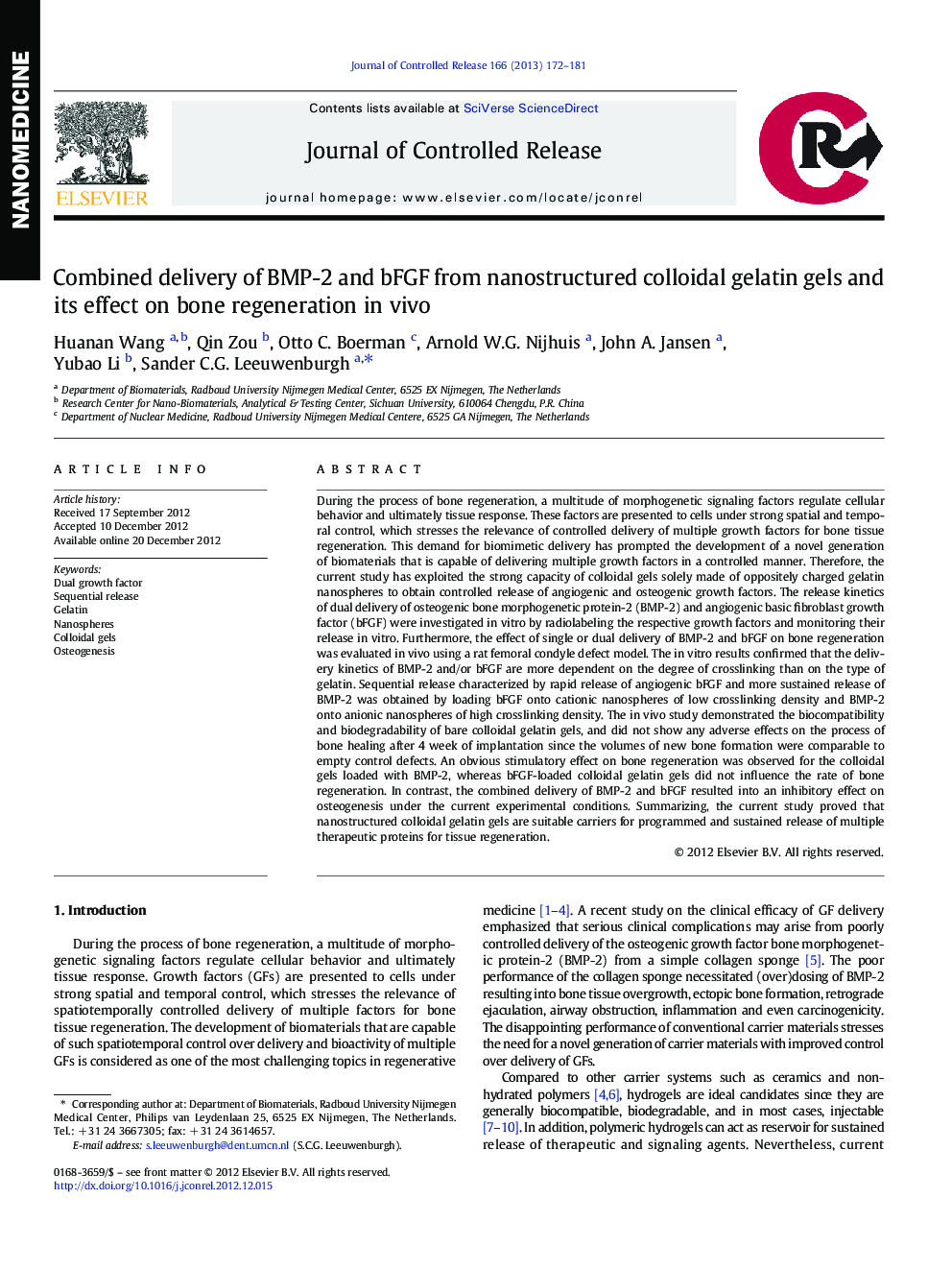| Article ID | Journal | Published Year | Pages | File Type |
|---|---|---|---|---|
| 1424266 | Journal of Controlled Release | 2013 | 10 Pages |
During the process of bone regeneration, a multitude of morphogenetic signaling factors regulate cellular behavior and ultimately tissue response. These factors are presented to cells under strong spatial and temporal control, which stresses the relevance of controlled delivery of multiple growth factors for bone tissue regeneration. This demand for biomimetic delivery has prompted the development of a novel generation of biomaterials that is capable of delivering multiple growth factors in a controlled manner. Therefore, the current study has exploited the strong capacity of colloidal gels solely made of oppositely charged gelatin nanospheres to obtain controlled release of angiogenic and osteogenic growth factors. The release kinetics of dual delivery of osteogenic bone morphogenetic protein-2 (BMP-2) and angiogenic basic fibroblast growth factor (bFGF) were investigated in vitro by radiolabeling the respective growth factors and monitoring their release in vitro. Furthermore, the effect of single or dual delivery of BMP-2 and bFGF on bone regeneration was evaluated in vivo using a rat femoral condyle defect model. The in vitro results confirmed that the delivery kinetics of BMP-2 and/or bFGF are more dependent on the degree of crosslinking than on the type of gelatin. Sequential release characterized by rapid release of angiogenic bFGF and more sustained release of BMP-2 was obtained by loading bFGF onto cationic nanospheres of low crosslinking density and BMP-2 onto anionic nanospheres of high crosslinking density. The in vivo study demonstrated the biocompatibility and biodegradability of bare colloidal gelatin gels, and did not show any adverse effects on the process of bone healing after 4 week of implantation since the volumes of new bone formation were comparable to empty control defects. An obvious stimulatory effect on bone regeneration was observed for the colloidal gels loaded with BMP-2, whereas bFGF-loaded colloidal gelatin gels did not influence the rate of bone regeneration. In contrast, the combined delivery of BMP-2 and bFGF resulted into an inhibitory effect on osteogenesis under the current experimental conditions. Summarizing, the current study proved that nanostructured colloidal gelatin gels are suitable carriers for programmed and sustained release of multiple therapeutic proteins for tissue regeneration.
Graphical abstractBy loading different growth factors in sub-populations of gelatin nanospheres (NS) respectively, colloidal gels comprising oppositely charged gelatin nanospheres showed strong capacity to obtain sequential release of dual growth factors.Figure optionsDownload full-size imageDownload high-quality image (207 K)Download as PowerPoint slide
